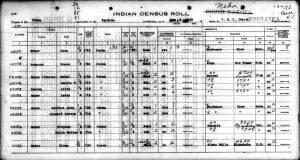Treaty of November 5, 1857
Articles of agreement and convention made this fifth day of November, in the year one thousand eight hundred and fifty seven, at the meeting house on the Tonawanda reservation, in the county of Genesee, and State of New York, between Charles E. Mix, commissioner on behalf of the United States, and the following persons, duly authorized thereunto by the Tonawanda band of Seneca Indians, viz: Jabez Ground, Jesse Spring, Isaac Shanks, George Sky, and Ely S. Parker. Whereas a certain treaty was heretofore made between the Six Nations of New York Indians and the United States on the 15th day … Read more

